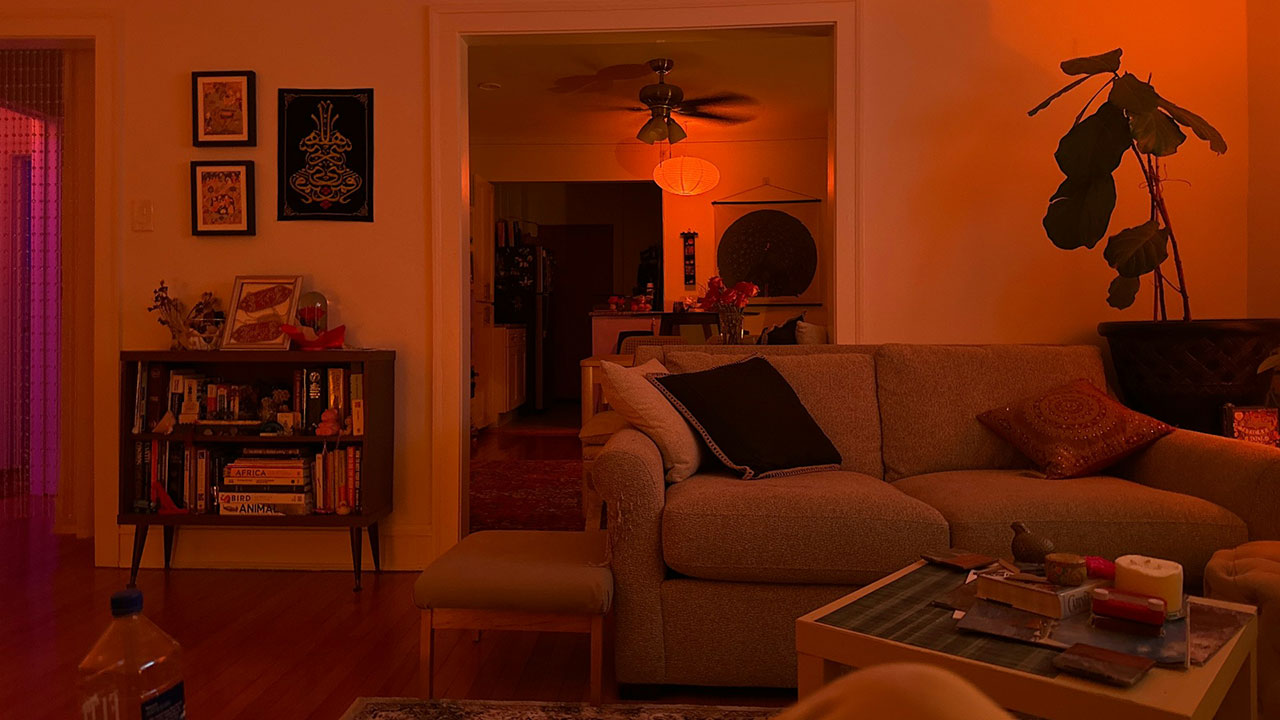The one room that never looks right until you fix this
You can spend all the money in the world decorating your living room — the nicest couch, a beautiful rug, the perfect wall color — and it can still feel off. Something about it just doesn’t look right, no matter how much you rearrange or tweak.
The reason is usually the lighting. It’s the one thing most people overlook, but it’s the detail that makes or breaks how a room feels.
Lighting controls everything you see
Lighting affects everything from your wall color to how clean a space looks. If your living room feels dim or yellow, it’s not your furniture’s fault — it’s your bulbs. The wrong lighting makes even well-decorated spaces feel heavy, cluttered, or cold.
Warm lighting adds comfort and softness, while cooler tones highlight details and contrast. Most living rooms need a balance — bright enough for reading or cleaning, but warm enough for relaxing in the evenings. Mixing temperatures (like daylight bulbs next to soft white lamps) often throws everything off without you realizing why.
Overhead lighting isn’t enough

Most homes rely on a single overhead fixture, and that’s the first mistake. Ceiling lights create harsh shadows and leave corners dark. It makes your furniture look flat and your paint dull. Even if you swap the bulb, you’ll still be missing depth and warmth.
Layered lighting is what brings a room to life. You need more than one source — a floor lamp for height, a table lamp for balance, and accent lighting for warmth. Once you spread the light around, the room instantly feels bigger and more finished.
Shadows make clutter look worse
A poorly lit room exaggerates messes and unevenness. Piles, cords, or dark furniture look more noticeable when light hits them unevenly. That’s why a living room with the same amount of “stuff” can look cleaner after a few small lighting changes.
Soft ambient lighting smooths things out. Wall sconces or hidden LEDs can fill shadowy areas without overpowering the space. You don’t need fancy fixtures — you just need balanced light that reaches every corner.
Natural light is your best asset
If your living room has windows, use them to your advantage. Natural light brings warmth and clarity that no bulb can replicate. But many people unintentionally block it. Heavy curtains, oversized furniture, or bulky blinds can keep sunlight from spreading through the space.
Swapping to lighter drapes, pulling furniture away from windows, or even cleaning glass more often can make a massive difference. The more natural light you have during the day, the less artificial light you’ll need overall.
The wrong bulbs can ruin the mood

Not all bulbs are equal, and many of the cheaper ones have poor color rendering. That means your beige walls might suddenly look green or your wood tones could appear dull. Look for bulbs labeled “high CRI” (color rendering index) or around 2700–3000K for a cozy, accurate light.
Smart bulbs are another great option if you want control. Being able to shift from bright daylight to a softer evening glow helps your living room adapt to how you actually use it — not how it looks in a catalog.
Once the light is right, everything else clicks
When your lighting finally works, you’ll notice your whole living room starts making sense. The rug feels richer, your furniture stands out, and the space feels calm instead of chaotic. It’s not that you needed more décor — you needed to see what was already there.
Good lighting fixes what expensive upgrades can’t. It turns a room from “fine” to finished. So if your living room has never looked quite right, skip the new throw pillows for now and start with the bulbs — you’ll be shocked at how much that one change transforms everything.
Like Fix It Homestead’s content? Be sure to follow us.
- I made Joanna Gaines’s Friendsgiving casserole and here is what I would keep
- Pump Shotguns That Jam the Moment You Actually Need Them
- The First 5 Things Guests Notice About Your Living Room at Christmas
- What Caliber Works Best for Groundhogs, Armadillos, and Other Digging Pests?
- Rifles worth keeping by the back door on any rural property
*This article was developed with AI-powered tools and has been carefully reviewed by our editors.







